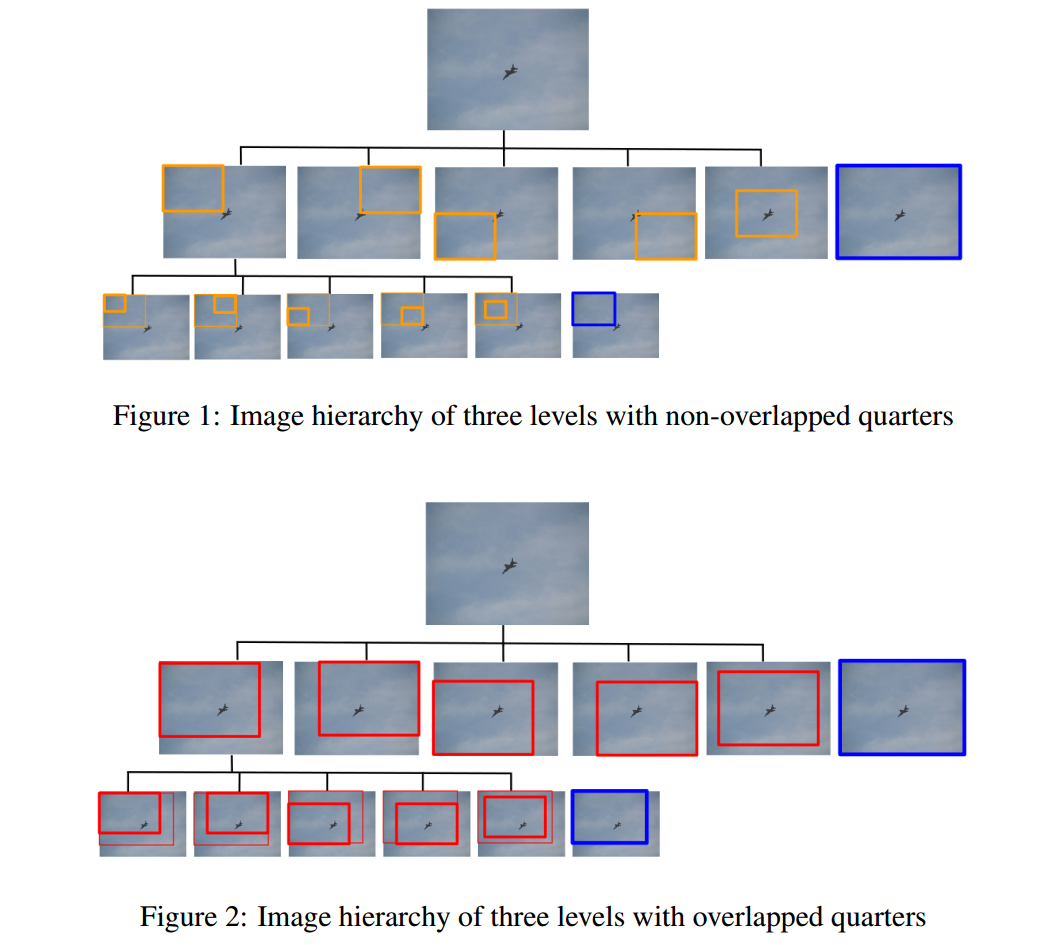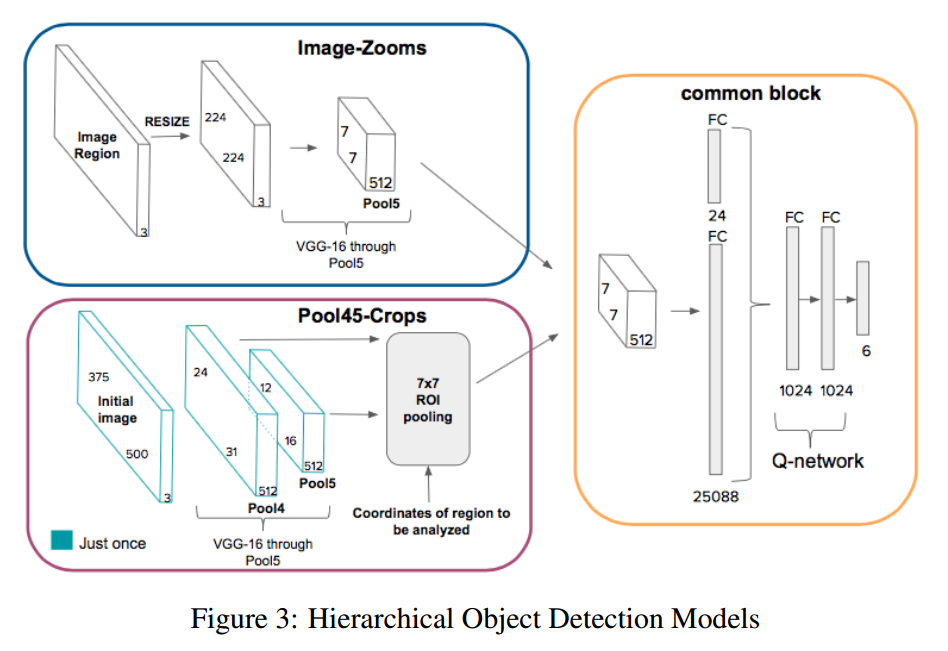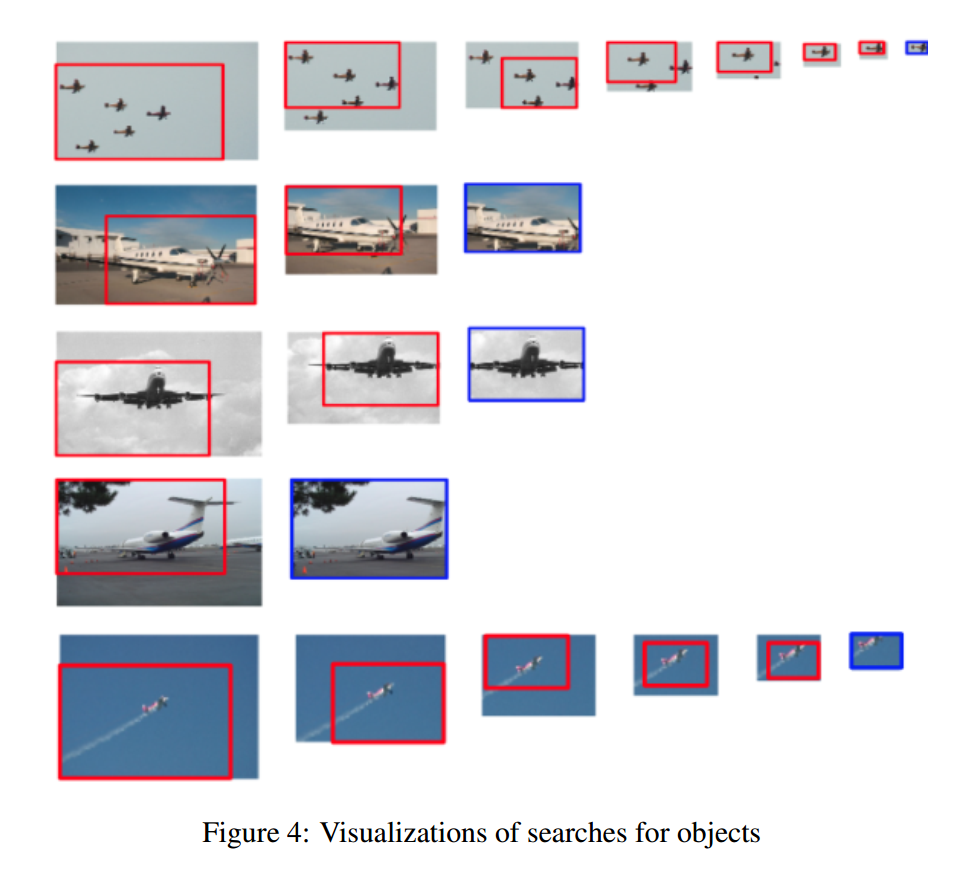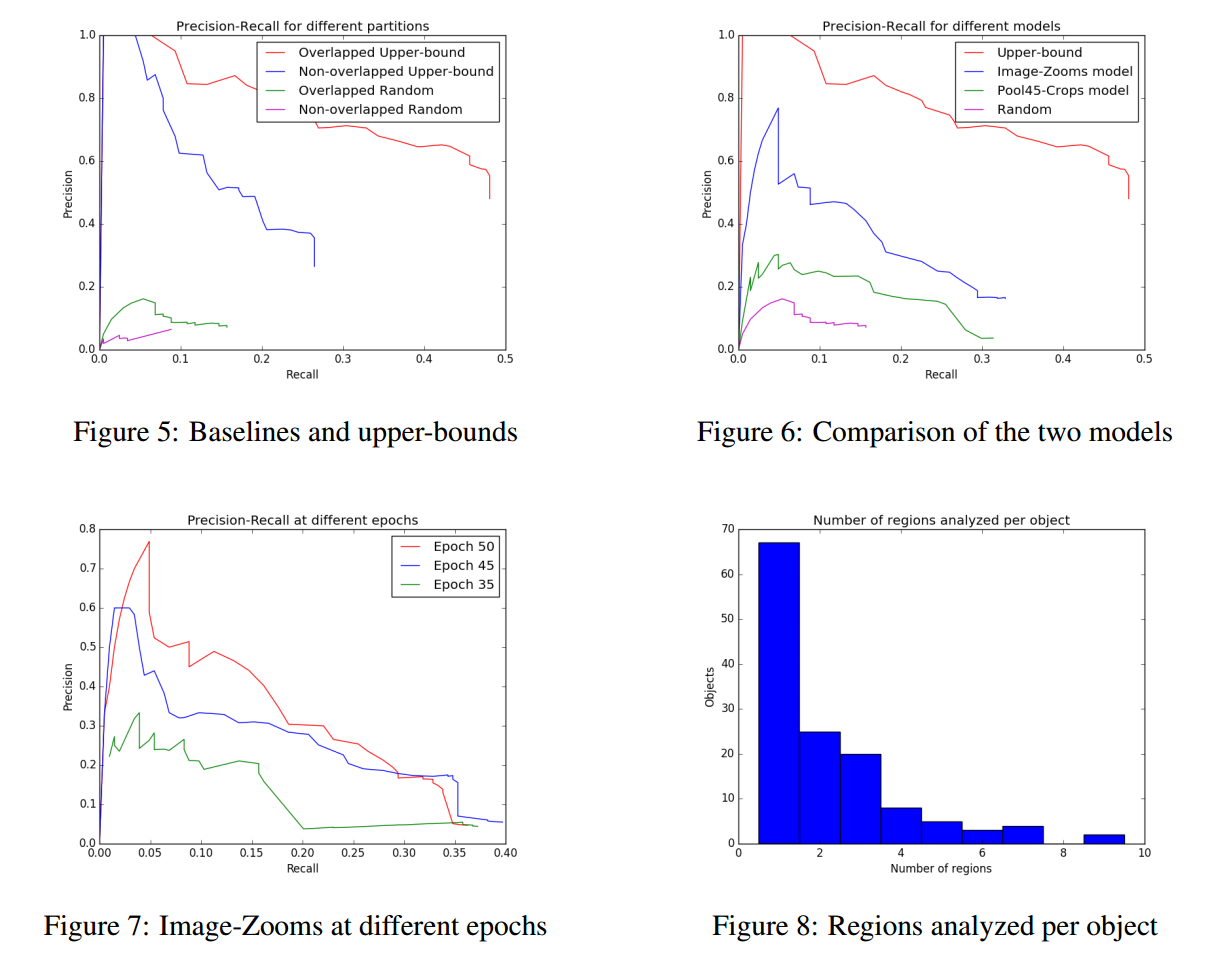本文共 1779 字,大约阅读时间需要 5 分钟。
Hierarchical Object Detection with Deep Reinforcement Learning
NIPS 2016 WorkShop
Paper : https://arxiv.org/pdf/1611.03718v1.pdf
Project Page : https://github.com/imatge-upc/detection-2016-nipsws
摘要: 我们提出一种基于深度强化学习的等级物体检测方法 (Hierarchical Object Detection). 关键点在于: 专注于图像的含有更多信息量的区域, 并且放大该区域. 我们训练一个 intelligent agent, 给定一个图像窗口, 能够确定将注意力集中于预先设定的五个区域中的哪一个. 这个过程迭代的提供了一个等级的图像分析. 我们对比了两个不同的候选 proposal 策略来引导图像搜索: with and without overlap. 此外, 我们的方法对比了两种不同的策略来提取特征: 第一种是对每一个 region proposal 计算新的 feature map ; 另一种方法是对于整幅图像计算 feature maps 并为后续的每一个 region proposal 提供 crop 的feature map.
模型 Hierarchical Object Detection Model :
我们定义了物体检测问题当做是序列决策过程 (the sequential decision process). 每一个时间步骤, agent 应该决定图像的哪个区域应该集中注意力, 以便于少量的步骤内找到物体. 我们将这个问题看作是 Markov Decision Process , 提供了一个框架来建模 decision making.
MDP formulation :
作者首先定义了 MDP 的大致过程 : state, actions, reward :
State : 当前区域 和 记忆向量 构成, 即: the current region and a memory vector. 描述符定义了两个模型: the Image-Zooms model and the Pool45-Crops model . 状态的记忆向量(memory vector)捕获了agent 搜索物体当中,已经选择的过去 4 个 actions. 由于 agent 是学习一个 bounding box 的 refinement procedure, 一个记忆向量编码了这个 refinement procedure 的状态 用来稳定搜索轨迹. 我们将过去的 4 个 actions 编码成一个 one-shot vector. 由于本文定义了 6 个 actions, 所以向量的维度是 24.
Actions : 跟 ICCV 2015 年的那个检测的方法一样, 这里的action 也是定义成了图像变换的操作 和 停止操作.
Rewards : 此处的设计 与 ICCV 2015 仍然是一致的.


Model :

我们讨论了两种提取特征的方法, 上面就是所用的大致网络框架. Image-Zooms model and the Pool45-Crops model.
对于 Image-Zooms model 来说, 每一个区域都 resize 成 224*224 的大小, 然后抽取 VGG-16 的 Pool 5 layer 的特征.
对于 Pool45-Crops model, 图像是 full-resolution 传给 VGG-16 的 Pool 5 layer.
像 Faster RCNN 的 ROI Pooling 的方法一样, 本文也是采用这种思路, 只是抽取 ROI 的 feature . 像 SSD 一样, 我们根据 ROI 的尺寸来选择 feature map. 对于较大的物体, 本文的方法就选择较深的 feature map, 而较小的物体, 本文就选择较浅的 feature map .


转载地址:http://ognbo.baihongyu.com/